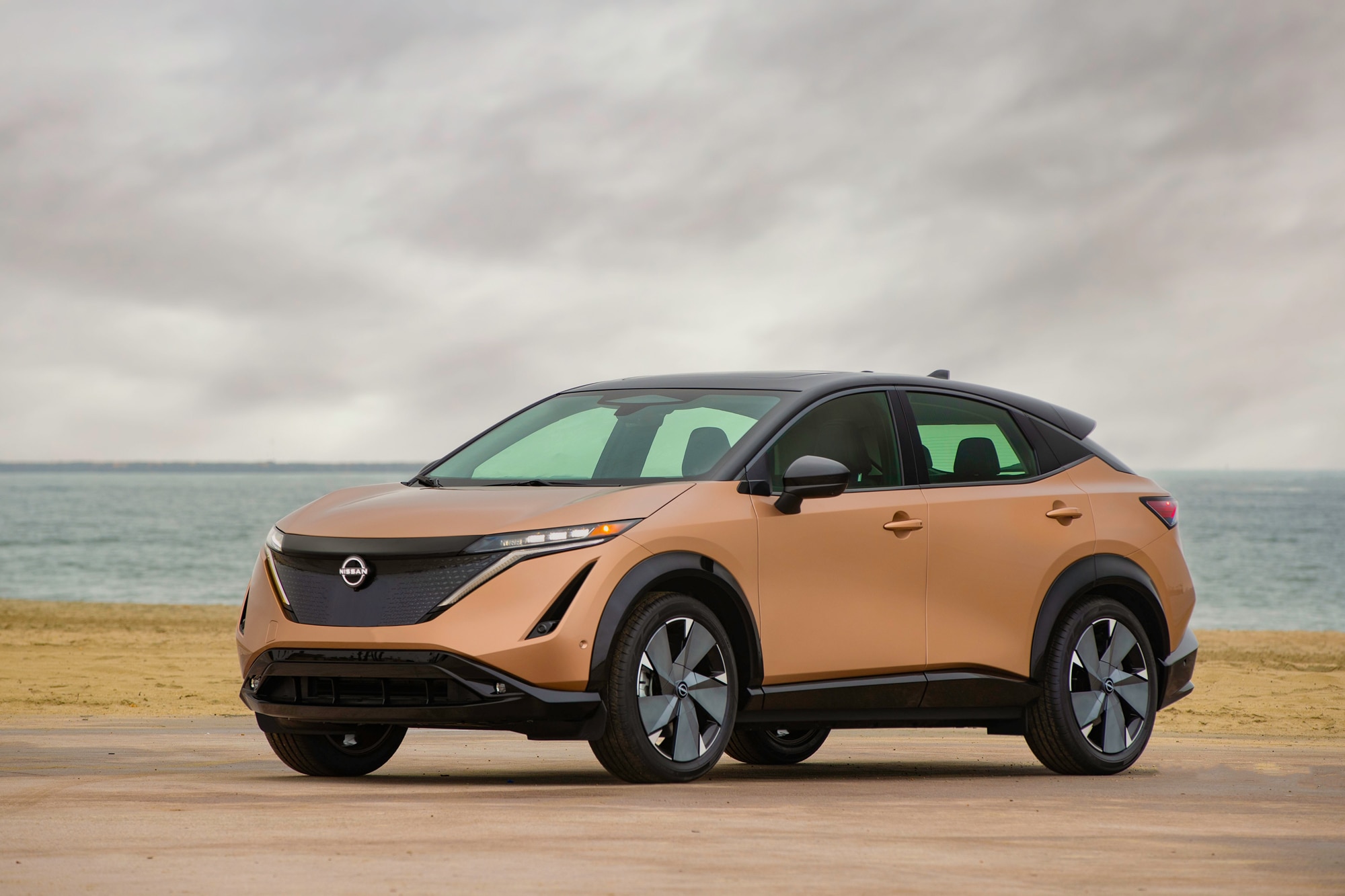The Nissan Leaf Falls as the Ariya Takes Root
Nissan appears to be setting its sights upmarket, to the detriment of bargain shoppers.
 Nissan
Nissan
Ah, the venerable Nissan Leaf. What started as a frog-faced electric crossover with a mere 73 miles of range has morphed into an almost sporty-looking model that can go up to 212 miles on a charge. However, for 2023, Nissan pared down the lineup from five trim levels to just two: a no-frills, limited-range economy ute and a big-battery luxury-leaning model with a hefty premium. What gives?
If we had to speculate, we’d guess that Nissan is looking to push buyers away from the Leaf and toward the upcoming, more expensive, and much more refined Ariya, scheduled to debut this fall. The evidence is rather damning. In addition to rumors that Nissan will drop the Leaf by mid-decade, the automaker hasn’t put much effort into making the vehicle competitive. The 2023 Leaf S wins on price, starting at around $29,000 before incentives, but its 40 kWh battery has enough juice for only 149 miles of range. At a maximum charging rate of 50 kW, it takes 40 minutes to restore said battery to 80% from dead—not great in this day and age, but then, superquick charging is a luxury and not something you’d expect to find on one of the least expensive EVs on the market.
The upgrade choice is the Leaf SV Plus, which has a 60-kWh battery good for 212 miles of range. This baby can charge at 100 kW and needs 60 minutes to go from 0% to 80%. The model’s almost $37,000 entry price seems a bit steep, though, when you consider that a Hyundai Ioniq 5, for about $4,000 more, offers 303 miles of range from a 58 kWh battery that accepts 350 kW charging.
The Ariya compact crossover will undoubtedly be more refined, with better technology, battery capacities ranging from 66 to 91 kWh, quicker charging rates, and more creature comforts, but it won’t be a sub-$30,000 bargain. It will likely start just above $47,000. That’s for the 304 mile Venture+ trim. For the top-of-the-line Platinum+ model with all-wheel drive and 265 miles of range, the price jumps to about $60,000. Even with the $7,500 federal tax credit, the Ariya will be a stretch for many Nissan fans looking for a new electric crossover.
Fortunately, there are still a few brands that cater to economy-minded EV shoppers. The Mini Cooper SE Electric, Mazda MX-30, Chevy Bolt EV, and Hyundai Kona Electric start around or below $35K. The first two don’t offer much range or a high charging rate, but the Bolt and Kona are worth a look. The Bolt EV has 259 miles of range, and while it opens at around $35,000, Chevy is offering buyers a $5,900 discount right now. Its maximum charging speed of 55 kW isn’t ideal, but if you’re like most people and do the majority of your charging at home on a Level 1 or 2 charging station, this is less of a concern. The Hyundai offers 258 miles of range and can charge at 100 kW, but it’s the most expensive of this bunch, starting at around $35,500.
Written by humans.
Edited by humans.
 Emme Hall
Emme HallEmme Hall loves small convertibles and gets out to the canyons in her 2004 Mazdaspeed Miata whenever she can. You can also find her in the dirt in her lifted (yes, that's right) 2001 Mazda Miata, or racing air-cooled Volkswagens in races like the Baja 1000. She's taken first place twice in the Rebelle Rally — once driving a Jeep Wrangler and then a Rolls-Royce Cullinan the second time. She was also the first driver to take an electric vehicle to the Rebelle Rally when campaigning the Rivian R1T to a top-five finish.
Related articles
View more related articles